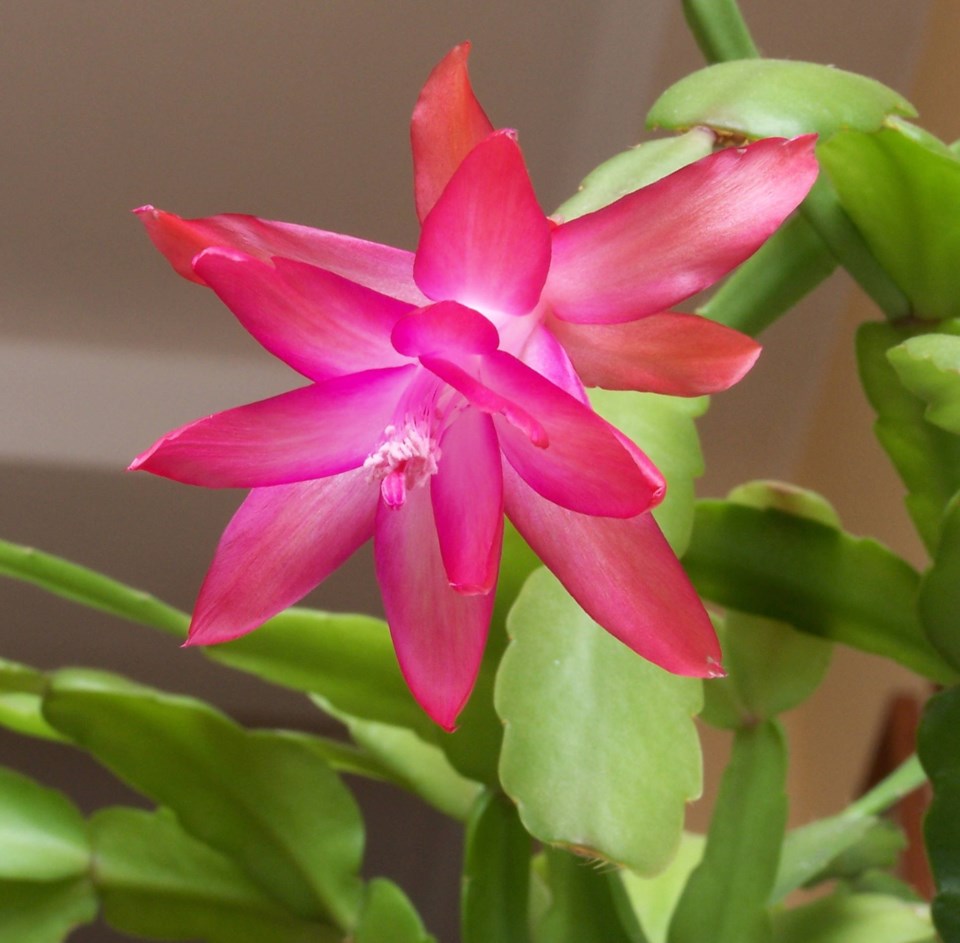Q. I have had this Christmas plant for many years and it used to flower in December. For the past two years it has stopped flowering. I gave it plant food but still no flowers. I had it in the basement all year round facing south. How can I get it to flower again?
Florence, Vancouver
A. Your plant sounds like a Christmas cactus. It probably stopped flowering because of heat and blistering sun from the two years of long summer droughts we’ve had. In hot summers, they need to stand in a shadier spot.
Christmas cactus like warm but not hot places. They don’t object to occasional bright light but long spells of strong sunshine make them sick.
Though Christmas cactus is from South America, it’s not a true cactus. It’s a rainforest plant (epiphyte) used to growing on trees and rocks in humid air and partial shade. Their food comes from debris falling from trees and liquid comes from rain and mist on the foliage.
Regular fertilizer is OK, but they don’t need much. Every couple of months in the growing season is enough. Christmas cactus roots are mainly hold-fasts so foliar fertilizer diluted and sprayed on the leaves also works well.
They mustn’t sit in liquid or their roots could rot. So it’s best to wait till they’ve dried out for a few days, then water.
Q. I need to move a hellebore. When is the best time to move it? Should I wait till spring?
Pat, Langley
A. The best time to move hellebores is right after the flowers die back. That’s usually in the spring. But that’s only good if we have normal rainfall in the spring. If next year’s summer drought starts early, will you be able to keep it watered often?
Hellebores hate being moved and take a very long time to recover. As I recall, Pat, you have sandy, gravelly soil that’s normally fast-draining unless you load it up with manure or compost.
If your hellebore is a Hellebore orientalis, these are the most drought-tolerant of any of them. But it may still need to be watered two or three times a week for several months after being moved. Grey water is fine for hellebores.
Adding some manure or compost to the hole would help both for nutrition and water retention. Bonemeal would also be useful.
amarrison@shaw.ca



